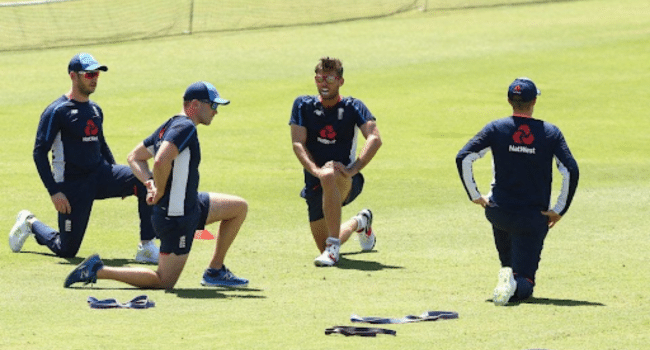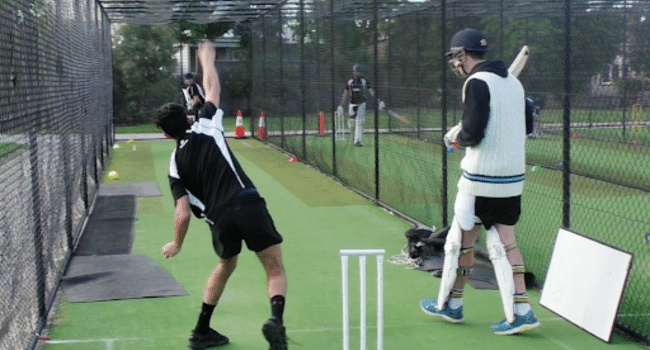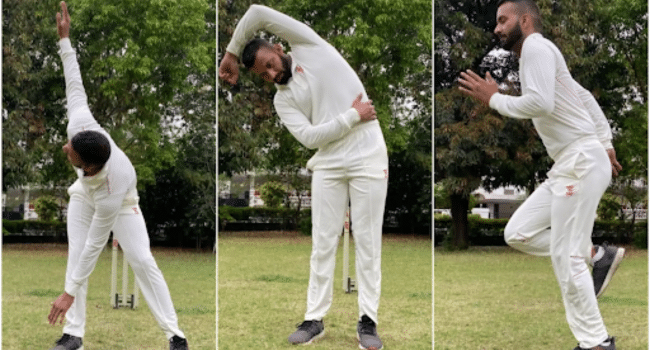Table of Contents
In aspiring to whip your body up into shape, especially to compete at the highest level, it’s going to require a very specific regimen of workouts, diet, and practices. When it comes to cricket, you have lateral movements of batsmen swinging the bat and bowlers bowling in their own signature styles. So they do not all train at the gym in the same way, nor do they consume the same food, as say professional swimmers do. Sprinters and swimmers have a leaner diet built around keeping their bodies light. Gymnasts have to keep their body particularly nimble. Cricketers meanwhile normally need to have a bit more power to them.
In this piece, we’re going to talk about the routines that cricketers follow on a week in, week out basis to keep themselves ready to perform at the highest level during their games and do so with minimal risk of injury.
The Demands of Cricket
There are different formats of cricket. For a long time there has been the test match, which goes on for several days. Much more recently, the T20 format has cropped up as well, giving viewers more of a bite size show to enjoy and quickly see how their bets play out on platforms like odds96.co.in. Even these two formats, along with one-day internationals and any other match duration is going to alter players’ workout regimens. For test matches, endurance is more key. But in both cases, power, torque, and keeping particular muscle groups stretched is a must in cricket.
- Test cricket: bowlers need to maintain speed and accuracy over potentially hundreds of deliveries, while batsmen must concentrate for hours, often under worsening pitch conditions
- T20s: fast-paced, requiring high-intensity explosive movements, quick decision-making, and razor-sharp reflexes.
- ODIs: a middle ground between the two – physical exertion with a touch of speed and stamina.
Workouts
This sport doesn’t require the bulk of a bodybuilder as would other sports like American football. What they do seek is functional strength.
- Lower body generates battsmen and bowling power: making squats, lunges, and deadlifts a mainstay workout.
- Upper body: aids in bat control, throwing power, and absorbing impact. So cricketers do a lot of shoulder presses, rows, bench presses, and pull-ups.
- Core strength: this is possibly the most important. It connects the upper and lower body movements and stabilizes the body during high-intensity movements. So you see a lot of them doing planks, twisting with the medicine ball, and performing cable rotations.
These players move around for quite a long time. Stamina is a definite most, particularly in test cricket. Fielders often cover several kilometers by the time the match is done. Not to mention all the burst of bowling and bat swinging. This means long-distance cardio and sprinting at different intensities. Shuttle runs and beep tests are used to simulate the rhythm of real matches. Other common drills are cone zigzags and T-drills.
Stretching

Injury is always a very serious concern, so much so that star players are often taken out of games early. For that reason, there is a lot of stretching done like leg swings and arm circles on top of static stretching, foam rolling, and sometimes also pilates, which can improve body control and posture.
Diet
You can’t outtrain a bad diet as they say, so cricketers must eat healthy for all their pumping iron and conditioning to pay off. Diet affects cricketers’ endurance, mental focus, and how quickly they recover.
Every cricketers needs a well-balanced diet with a mix of:
- Carbohydrates: the main energy source. They often eat things along the lines of oats, brown rice, quinoa, or sweet potatoes. The list is quite broad. A lot of cricketers also eat fruit, honey, and candy on the sideline to give themselves short-term energy too. Virat Kohli mentioned that he steams almost all of his food.
- Protein: this helps build muscle and recover faster. Pros try to eat 1.5-2 grams per kilo of body weight they have. That means lots of chicken, eggs, legumes, and fish like cod.
- Fats: these keep players playing for days and hours. They get them from avocados, nuts, seeds, olive oil, and the like. Though trans fats are a total different story.
Obviously cricketers drink a lot of water they entire day. Some prefer Gatorade. During games they get drinks every 15-20 minutes. Before games players eat 2-3 hours in advance and have a moderate, easily digestible meal. Then a little under a half hour before the game, they eat some fruit, electrolyte drink like Gatorate, or granola bars or some high-carb food.
Of course, supplements are a popular thing. These include whey protein which helps with muscle recovery, creatine which helps with explosive movements, and multivitamins and fish oil for rounding out the diet with anything they didn’t include.
Positional Routines
Of course, each position of player trains in quite different ways and even more importantly, they have to rehearse their skills over and over. Pro cricketers practice smart, not just hard. These are designed to simulate actual games. Let’s dive into what players do for each position.
Batting
Any battsmen need super hand-eye coordination and their workouts emphasize reflex drills, bat speed, and balance under pressure.
Some of the main drills here are:
- Shadow batting: Practicing footwork and shot selection without a ball to build muscle memory.
- Varied et sessions: Facing different bowlers or bowling machines simulating pace, spin, and bounce.
- Throwdown drills: A coach or teammate throws balls with a specific intent, like yorkers, bouncers, or inswinger, to hone reaction time.
- Underarm ball drill: For practicing judgment and soft hands for drop shots and nudges.
- Reaction balls or light training: Small or bouncing balls for quick-reflex batting drills.
Bowling

Fast bowlers have to have strong legs and a powerful core to whip up a pace while preserving their bodies safe from injury at the same time. They do sprinting, mobility exercises, and shoulder strength routines. Spin bowlers rely more on accuracy, rhythm, and flexibility than brute strength.
What they usually do here is:
- Spot bowling: Place a cone or marker on the pitch and try to hit it repeatedly.
- Wrist and seam position practice: Focus on grip and wrist angle using a mirror or camera
- Run-up drills: Practice your run-up rhythm with or without delivering the ball.
Wicket keeping
These guys are squatting the whole game. So they need a lot of leg strength as well as fast-twitch muscles for diving and elite hand speed for catching and stumpings.
They have a lot to hone:
- Standing up/back practice: Alternate between pace and spin to sharpen footwork and glove movement.
- Stumping drills: Focusing on footwork to the stumps and rapid glovework on spin deliveries.
- Diving collection drills: Tennis or cricket balls bounced off a slab or surface to mimic erratic bounces.
- Footwork ladder: Boosts lower-body quickness for moving laterally behind the stumps.
Fielding
These guys guard the field and try to dismiss the battsmen on the other team. Those standing both inside the circle or in boundary position must master quick sprints, directional changes, and safe landing mechanics when diving. They need to be accurate throwers too.
Main drills:
- Slips catching drill: Using a rebound net or deflection device for close-catching practice at varying speeds.
- High catch drills: Under floodlights or bright sun to simulate match conditions.
- Diving and sliding practice: Lay out cones or crash mats to learn how to dive properly
- Underarm and direct hit drills: Focusing on collecting and throwing in one fluid motion with targets like stumps or cones.
